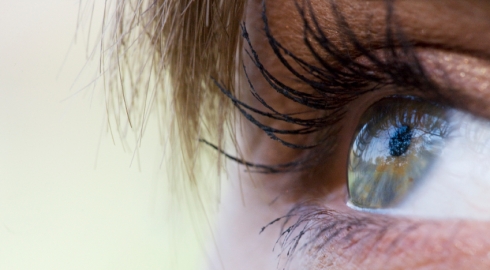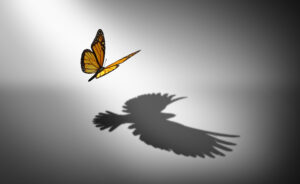An increasing number of business leaders claim its core to their wellbeing; neuroscientists say its benefits are scientifically proven; and some of the world’s biggest and best-known organisations are training their employees in its
art. It’s mindfulness, and, say a whole host of experts, its practice will be central to the future workplace.
The first step in becoming more mindful (that is, “paying attention on purpose, in the present moment, and nonjudgmentally, to the unfolding of experience moment to moment”) is to take the everywomanNetwork workbook An introduction to
mindfulness, the precursor to Mindful Leadership. But if silent meditation isn’t for you, there are plenty of ways to incorporate mindfulness into your working life. No beanbags or crystals required.
IN CONVERSATION WITH CO-WORKERS: TRANSFORM YOUR LISTENING
Be honest; How much of the time you spend ‘listening’ to others is otherwise engaged with thinking up what you’ll contribute next to the conversation or letting your mind wander to that urgent task you’ll turn your attention to just as
soon as the meeting’s over? Mindfulness is all about non-judgementally being in the present moment, so consciously bring this awareness to your everyday workplace conversations, paying attention to what your colleagues are saying – both
aloud and through their physicality. It’s called ‘transformational listening’ and its impact – better workplace relations – inspires feelings opposite to those felt when they’re not being heard: irritated, disempowered and doubtful of
their own communication skills.
DURING BREAKS: TAKE A MINDFUL LUNCH HOUR
If lunch breaks are a hastily gobbled sandwich over a keyboard while catching up on emails, you’re missing a golden opportunity to introduce a short burst of mindful activity into your daily working life. Even if you can only spare ten
minutes, use that time to get a change of scenery and slowly chew your food, savouring the sensations and enjoying the time out. A walk in the fresh air is an ideal precursor, so if the lunch hour is the only time of the day you can fit
in a team meeting or catch up with a colleague, make it a walking one. Said to increase creative thinking by 60% and encourage more honest exchanges between co-workers, the ‘walk and talk’ trend is being encouraged, among other
businesses large and small, by Western Union, whose CEO Hikmet Ersek claims: “People become much more relaxed, and they talk from their hearts if you go for a walk with them. And they get to the point they want to make much more
quickly.”[i]
DURING BRAINSTORMS: ALLOW YOUR MIND TO WANDER FREELY
From early childhood, you’re warned against daydreaming; allowing your mind to wander from the task at hand is generally frowned upon from the classroom through to the office. But it’s through imaginative mind play that you make new
connections in your neural pathways that spark to life your most ingenious ideas. Practice solo brainstorming, using mind-mapping or some other playful problem-solving technique to explore the less obvious solutions to the challenges
you face in everyday life.
THROUGHOUT THE WORKING DAY: CHANNEL YOUR INNER SHERLOCK
Strong powers of observation (link to feedback series part two) can give you the edge in job interviews, negotiations and indeed any business situation requiring tact or diplomacy. It also enables you to notice stimuli in your
environment that can lead to sparks of new ideas and solutions. But the truth is that most of us often don’t notice the small details often staring us in the face.
“It’s important to note when talking about Holmes that he has spent a lifetime cultivating the habits of mindfulness. So it’s not like he was just born with this ability to be in touch with the world. What we choose to notice or not
notice is a way of framing it in our own mind [and] we have to retrain ourselves to really notice the world,” writes Maria Konnikova, in Mastermind: How to think like Sherlock Holmes
Challenge yourself daily to pay attention to something you otherwise ignore. It could be what a co-worker is wearing, the taste of new food you try on a lunch break or looking at a new piece of art via an online collection. Test your
visual skills further by taking part in something like Photo Challenge, 365 Project or BBC In Pictures, which inspire you to see the world with different eyes.
WHEN ENGAGING IN THE ROUTINE: SHAKE UP THE TRIED AND TESTED
Mindlessness, the opposite of mindfulness, is defined as the “state of autopilot” so easily slipped into throughout the working day. Look for ways, wherever possible, to shake up your routine and inject newness into the routine elements
of your day. It could be the route you take to work; the snack you take on your coffee break; the meeting room you book for your 1-2-1; the running order of your team meeting’s agenda; the tried and tested exercise you use for
brainstorming; the colleague you go to for a second opinion; where you lunch and who you eat with; the usual websites you use to catch up with industry or business news. Every time you catch yourself doing something the same old way,
ask yourself how you could try it differently.
IN YOUR DOWNTIME: THINK BACK TO CHILDHOOD ACTIVITIES
Children, by their nature, are mindful practitioners; wholly absorbed by whichever task they’re engaged in or whatever has caught their attention in the moment. The rise of adult colouring books and apps (link to mindfulness apps
feature) – the publishing phenomenon of recent times – is testament to the meditative, -slow-down-and-be-in-the-moment effect of such childlike activities on the stressed-out adult. So stock up on your crayons and downloadable mandalas
and set yourself the challenge of doing and thinking about nothing but staying between the lines. If colouring wasn’t your thing as a tot, the same meditative stance can be achieved through solitaire card games, Lego, crossword puzzles,
word games, Sudoku and jigsaw puzzles (the latter were at their most popular as a distraction for the whole family during the Great Depression).
BEFORE LIGHTS OUT: END YOUR DAY ON A POSITIVE NOTE
Feeling and expressing gratitude is a key pillar of mindfulness, and has been shown to have significant health benefits. In a study of over 1,000 people by Professor Robert Emmons at UC Davis in California, participants who kept a daily
journal of five things they were grateful for each day showed significant psychological, physical and social benefits compared to those who kept a diary of daily gripes. These included increased energy levels enabling more active
exercise sessions, better quality sleep lasting 10% longer than usual, and a 25% improvement in overall health and
wellbeing.
Keep a notepad by the side of your bed, and take a few minutes at bedtime to record a few things from your day you are grateful for (anything from the generosity of a colleague to a quick and efficient meeting or an uninterrupted lunch
break). If negative creeps in, dig deep and try to turn these into positives (a cross word with a colleague becomes an opportunity to
clear the air, failing to tick everything off your ‘to do’ list becomes a lesson in time management).
[i] inc.com/peter-economy/7-powerful-reasons-to-take-your-next-meeting-for-a-walk.html








